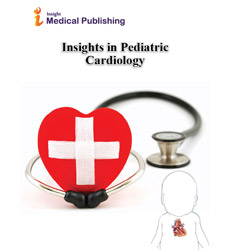Abstract
Profile of patients with hypoplastic left heart syndrome submitted to the first surgical stage
Background: Hypoplastic Left Heart Syndrome (HLHS) is responsible for 23% of deaths of cardiac origin during the first week of life and 15% of deaths by the same cause by the end of the first month. The initial surgery strategy has a prognostic impact on morbidity and mortality predominantly in the first two palliative stages and its choice is still controversial. This study aims to evaluate the morbidity and mortality of patients diagnosed with HLHS who underwent the Hybrid procedure or Norwood Surgery and its evolution to the second stage (Glenn's surgery) and the third stage (Fontan's surgery).
Methods and findings: A study was conducted based on the analysis of medical records of patients diagnosed with HLHS who underwent the hybrid procedure or Norwood Surgery between January 1995 and December 2018. It was analyzed: gender, twinness, birth weight, prematurity, prenatal diagnosis of congenital heart disease and other comorbidities, presence of preoperative organ dysfunction, type of surgery, age and weight in surgery, length of stay in the Intensive Care Unit, length of hospital stay, chance of survival and discharge from the ICU.
The sample had 172 patients, 15 Hybrid procedures (9%), 97 Norwood- Sano surgeries (56%), and 60 classic Norwood surgeries (35%). 39 patients (23%) were discharged from the ICU after the surgical procedure and, of these, 34 were discharged from the hospital. Patients discharged from the ICU were concentrated in 2008 and has increased since 2016. The chance of discharge from the ICU was lower in patients with low birth weight (p = 0.059) and in the last years of the study (p<0,0001). Once it is a retrospective study through the analysis of medical records, the work is subject to incomplete data, making it impossible to analyze some variables in detail.
Conclusions: The evolution in the treatment of HLHS in our service is evidenced by the decrease in in-hospital mortality in the last years, but survival is still far from that described in developed countries. New strategies must be implemented to reduce morbidity and mortality between the first and second stages.
Author(s):
Cesar Augusto de Oliveira Souza Filho
Abstract | Full-Text | PDF
Share this

Google scholar citation report
Citations : 5
Insights in Pediatric Cardiology received 5 citations as per google scholar report
Insights in Pediatric Cardiology peer review process verified at publons
Abstracted/Indexed in
- Google Scholar
- Secret Search Engine Labs
Open Access Journals
- Aquaculture & Veterinary Science
- Chemistry & Chemical Sciences
- Clinical Sciences
- Engineering
- General Science
- Genetics & Molecular Biology
- Health Care & Nursing
- Immunology & Microbiology
- Materials Science
- Mathematics & Physics
- Medical Sciences
- Neurology & Psychiatry
- Oncology & Cancer Science
- Pharmaceutical Sciences

